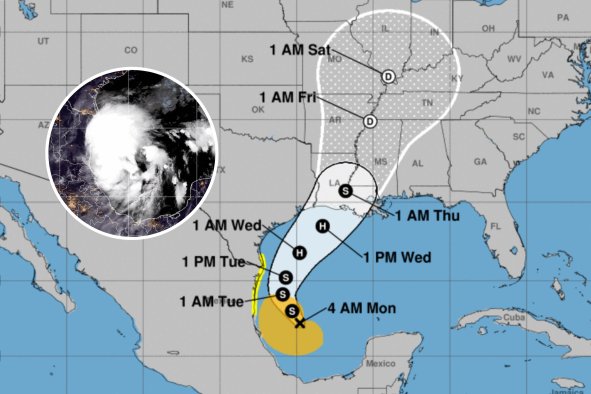Some slimy sea creatures have a very strange way of escaping predators, even after they've been swallowed.
Baby Japanese eels have been spotted escaping from the stomachs of fish that have eaten them by backing out tail-first, as if moonwalking, first out of their esophagus and then their gills, according to a new paper in the journal Current Biology.
These eels—Anguilla japonica—were previously found to escape from the bellies of fish, but their exact escape technique was only observed in detail for the first time thanks to the use of X-ray videography, the new paper describes.
"We have discovered that juvenile Japanese eels escape from the predator's stomach by moving back up the digestive tract toward the gills after being captured. This is the first time that the behavioral patterns and escape processes of prey inside the digestive tract of predators have been observed, using X-ray technology," study co-author Yuuki Kawabata, a researcher at Nagasaki University in Japan, told Newsweek. "The discovery of this behavior is recent. In our previous study, we showed that eels could escape through the predator's gills, but this current study is the first to observe their movements inside the predator's body."
The juvenile eels can be seen in the videos wriggling their way out of the stomachs of their fishy would-be predators. First, the eels insert their tails back up the esophagus of the fish, then feel their way tail-first toward the fish's gills, before pulling their whole body free.
Until now, scientists had no idea how the eels managed to pull off this vanishing act. This discovery was made by injecting the eels with barium sulfate, which allowed them to be seen clearly under the X-rays.
"We had no understanding of their escape routes and behavioral patterns during the escape because it occurred inside the predator's body," co-author Yuha Hasegawa, also a researcher at Nagasaki University, said in a statement.
The researchers filmed the capture of 32 eels, all but four of which attempted to escape via the esophagus and gills. Thirteen of the eels managed to get their tails out via the gills, and nine successfully escaped. The escapees took an average of 56 seconds to fully remove themselves from the fish.
"The most surprising moment in this study was when we observed the first footage of eels escaping by going back up the digestive tract toward the gill of the predatory fish," Kawabata said in the statement. "At the beginning of the experiment, we speculated that eels would escape directly from the predator's mouth to the gill. However, contrary to our expectations, witnessing the eels' desperate escape from the predator's stomach to the gills was truly astonishing for us."
This escape was most successful for eels who had not yet been entirely swallowed by the fish, with some part of their body still in the esophagus. Eels that had been totally swallowed were also spotted circling the stomach of the fish, seemingly in search of potential escape routes.
The eels had to work quickly, as the "highly acidic and anaerobic environment" of the fish's stomachs rapidly killed the eels.
"Once swallowed into the digestive tract of the predator, A. japonica gradually reduced its activity and ceased all movements (i.e., death) within 211.9 seconds on average," the researchers wrote in the paper. "Therefore, it is probably essential for eels to develop muscle strength and locomotor performance to quickly escape from an anaerobic and highly acidic environment as well as tolerate such a lethal environment."
The researchers hope that their X-ray methods can be used to study similar behaviors in other species, and also learn even more about these crafty eels.
"In addition to studying the kinematic, physiological, and behavioral factors that influence the success of eel escapes, we are also interested in exploring whether other elongated fish species exhibit similar escape behaviors. This will help us understand whether this is a common trait among phylogenetically close species and/or morphologically similar species," Kawabata said.
Do you have a tip on a science story that Newsweek should be covering? Do you have a question about exoplanets? Let us know via science@newsweek.com.
References
Hasegawa, Y., Mine, K., Hirasaka, K., Yokouchi, K., & Kawabata, Y. (2024). How Japanese eels escape from the stomach of a predatory fish. Current Biology, 34. http://dx.doi.org/10.1016/j.cub.2024.07.023
Disclaimer: The copyright of this article belongs to the original author. Reposting this article is solely for the purpose of information dissemination and does not constitute any investment advice. If there is any infringement, please contact us immediately. We will make corrections or deletions as necessary. Thank you.



